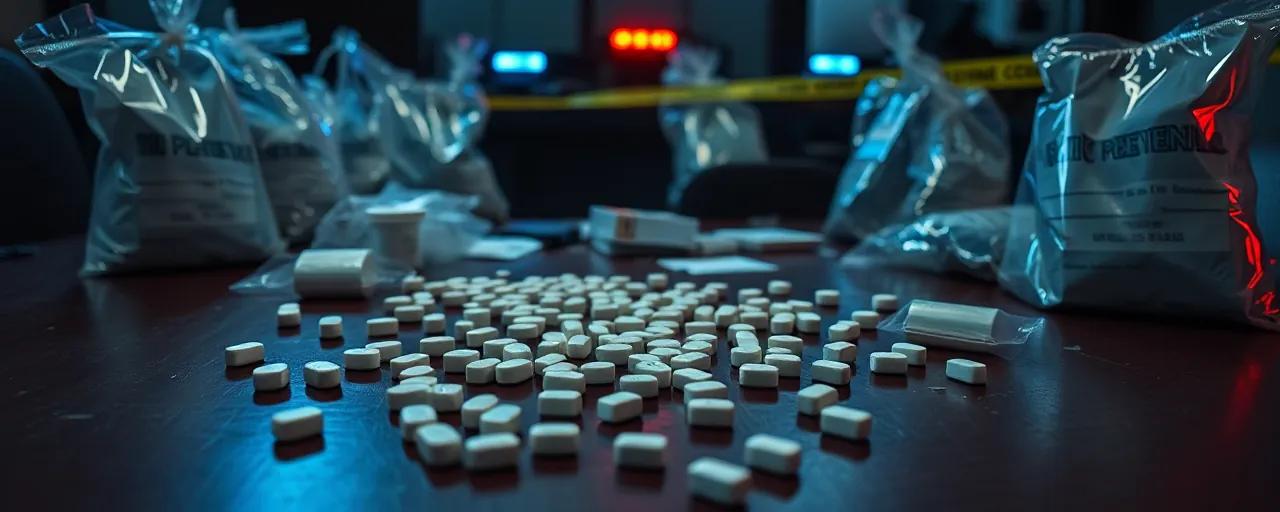A Drug Lord’s Reckoning in West Virginia
Ronald Lavaughn Mason, a 46-year-old fentanyl peddler from Beckley, West Virginia, just learned the hard way that crime doesn’t pay. On April 4, 2025, a federal judge slapped him with an 11-year-and-eight-month prison sentence for running a drug trafficking organization that pumped methamphetamine, fentanyl, and crack cocaine into the streets. This isn’t some petty dealer we’re talking about. Mason was a linchpin, orchestrating deals with at least 11 accomplices, moving lethal drugs that have turned communities into battlegrounds. His guilty plea confirms what many of us already know: the opioid crisis isn’t slowing down without a fight, and law enforcement is finally landing blows where they count.
This case hits home for anyone tired of watching drug lords poison our towns while bureaucrats bicker. Mason’s operation wasn’t a one-off; it was a calculated network that thrived in April and May 2024, exploiting West Virginia’s struggles with addiction. The FBI, ATF, and local police didn’t just sit on their hands. They intercepted his calls, tailed his deals, and raided his stash house, seizing over 540 grams of cocaine, 324 grams of fentanyl analogue, and $10,293 in dirty cash. That’s not pocket change, it’s a snapshot of a man who profited while families buried their kids. His sentencing is a wake-up call: justice still has teeth.
The War on Fentanyl Rages On
Mason’s takedown isn’t a fluke, it’s part of a broader offensive against the fentanyl plague that’s killing Americans faster than anything else between 18 and 49. West Virginia, ground zero for the opioid crisis since the OxyContin boom of the ‘90s, saw fentanyl in 76% of overdose deaths by 2021. That’s no surprise when guys like Mason flood the streets with synthetic poison. The Sinaloa cartel and its ilk have turned rural America into their playground, franchising death through local thugs. But here’s the good news: the Organized Crime Drug Enforcement Task Force, or OCDETF, is hitting back hard. Since 1982, this multi-agency juggernaut has been dismantling DTOs with a precision that’d make any patriot proud.
Look at the numbers. The High Intensity Drug Trafficking Areas program, working hand-in-glove with OCDETF, delivers $68 in benefits for every dollar spent, seizing mountains of fentanyl and locking up nearly 200 dealers in recent sweeps. Mason’s 12-man crew, all pleading guilty, shows how the domino strategy works, toppling small fry to nab the big fish. Sure, overdose deaths dropped 27.9% in West Virginia from August 2023 to 2024, beating the national average. That’s progress, not a fluke, driven by boots-on-the-ground enforcement, not endless hand-wringing. Mason’s 140-month sentence, far above the 76-month average for non-overdose cases, sends a message: deal death, and you’ll pay.
Soft-on-Crime Crowd Gets It Wrong Again
Plenty of voices out there, especially from the bleeding-heart set, whine that harsh sentences like Mason’s don’t solve the root causes. They’ll point to the U.S. Sentencing Commission’s recent tweaks, loosening guidelines and expanding the ‘safety valve’ to let more dealers dodge mandatory minimums. They argue addiction’s a health issue, not a crime wave, and push for more naloxone kits and rehab beds. Fair enough, overdose reversal and treatment matter, but let’s not kid ourselves. Mason wasn’t a victim, he was a predator, with two prior drug trafficking convictions staining his rap sheet. Letting him off light would’ve been a green light for every DTO thug to keep cooking fentanyl in their basements.
History backs this up. The ‘War on Drugs’ kicked off in the ‘70s because unchecked trafficking gutted communities, not because of some overzealous cop fantasy. The Anti-Drug Abuse Act of 1986 brought mandatory minimums for a reason: dealers like Mason don’t stop unless you make them. Yes, reforms like the Fair Sentencing Act of 2010 fixed some excesses, cutting the crack-powder disparity from 100:1 to 18:1. But when fentanyl’s tied to 80% of overdose cases, and deaths spiked 44% from 2019 to 2023, coddling kingpins isn’t the answer. Tough penalties deter, and Mason’s fate proves it.
A Blueprint for Victory
What happened in Beckley isn’t just a win, it’s a roadmap. The feds, alongside state and local cops, showed how to gut a DTO: surveillance, wiretaps, and a raid that left Mason nowhere to hide. His deal with Tilford Joe Bradley Jr. on April 9, 2024, caught red-handed under police watch, wasn’t a slip-up, it was arrogance meeting its match. The OCDETF’s multi-level attack, blending DEA smarts with local grit, is why all 12 of Mason’s crew are behind bars. This isn’t about optics, it’s about results, protecting real people from real threats.
West Virginia’s fight matters to every American watching their own towns crumble under addiction’s weight. The state’s poverty and job woes make it ripe for exploitation, but law enforcement’s resolve, backed by President Trump’s no-nonsense stance, is turning the tide. Mason’s 11-plus years isn’t the end, it’s a signal: DTOs can’t outrun justice forever. Families deserve safe streets, not sympathy for the devils who prey on them. That’s the bottom line.
